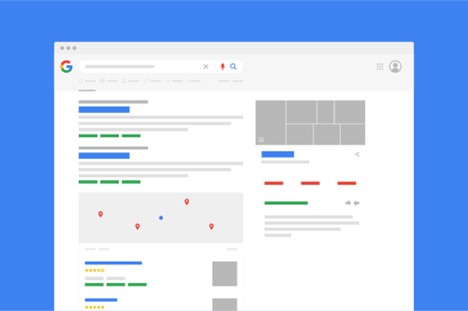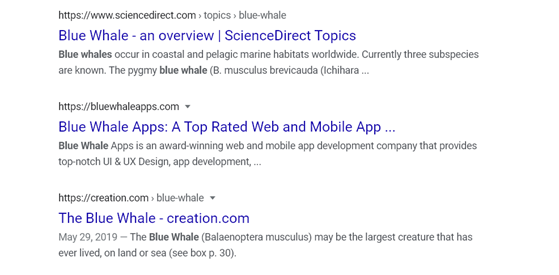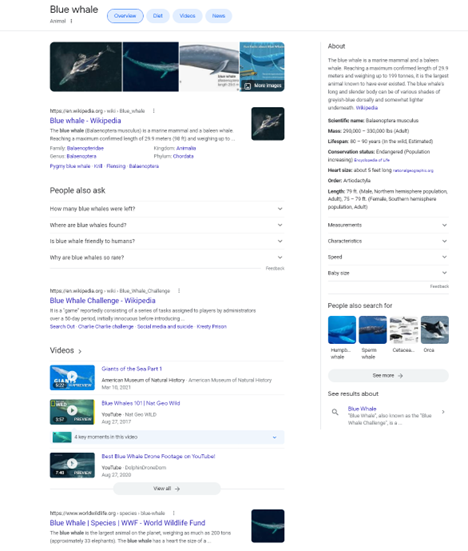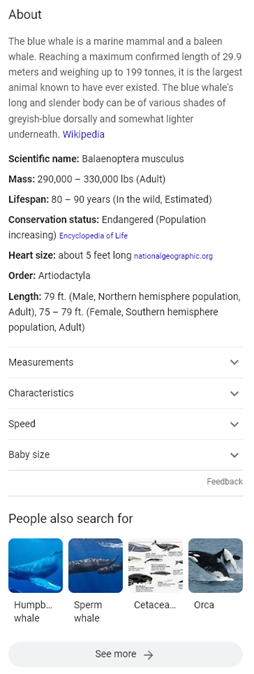
SERP Features Are Taking Over Search Results. Here’s How to Turn Them to Your Advantage.
With rich search engine results page (SERP) features becoming more and more prominent in search results, it is imperative that your business understands the ever-changing landscape in organic search results and how you need to approach the future in order to grow your organic traffic and visibility. In this article, we will begin to explore SERP features in depth and help point you to what you need to do to prepare for the present and future.
It’s no secret that for the last decade, Search results have started to become more and more crowded. It wasn’t so long ago that search results were comprised of a simple set of 10 organic search results like these:

But now, this is a far more common site:

Only 3 organic results appear on this image (and only 2 above the fold). Can you spot the 3 organic search results? We’ll give you a moment, as they are indeed hard to see among the knowledge cards, images, videos, and expandable accordion FAQ. So what happened to search results and how can you take advantage of these changes to compete better for visibility in 2022 and beyond?
What Are These Additions to Search Results?

These additions to search results are called “SERP Features”, short for search engine results placement features, and are any inclusion on a SERP that is not organic in nature. These can include PPC or paid search (ads), Universal Results (images, videos, news), Knowledge Graph panels (weather information, corporate information, celebrity knowledge panels, etc.), or Rich Snippets (augments to traditional organic listings which can include star ratings, pricing information, stock status, and more). The most common types include:
- AdWords (top and bottom)
- In-Depth Article
- Local Pack and Local Teaser Pack
- Shopping Results
- Knowledge Card
- News Box
- Featured Snippet
- Knowledge Panel
- Related Questions / “People Also Ask”
- Video
- Reviews
- Embedded Tweets
- Sitelinks
- Site Search Box
- Image Pack
Each of these features has its own unique presentation and styling and can appear in any combination based on any given search query and each has its own process to optimize for. SEO experts like those at NicheLabs can help guide you through what each of these is, how they work, and how to best target them. In doing so, you can put your site and your content in the best position to be crawled and get added to these features. These features have grown over the years and will undoubtedly continue to evolve as Google tests more of these sorts of features.
Blue Whale knowledge panel
Why Have All of These Additions Been Added to Search Results?
Search engines are always looking for and testing new ways to make it easier and more convenient for their users to find what they’re looking for in search results. They only care about your website to the degree that it can help their users find what they’re looking for and come away feeling like they’ve had a good experience with their search engine. To that end, they’ve steadily added more and more features over time: Local Pack listings of local businesses, News sections, Tweets embedded right in search results, videos from YouTube and other sources, images, shopping carousels, and more. All in the pursuit of getting people to the information they want in as few clicks as possible, and in some cases without having to leave the Google/Bing ecosystem to do it. After all, the more time a user spends in Google, YouTube, Gmail and similar, the more opportunities Google has to serve that user ads or collect analytics information on them, both of which represent the lion’s share of how they make their money. The motives are clear on their end. The only question is how you will move forward to stay relevant.
So…Can We Go Back to Simple Organic Search Results?
In the famous words of Lee Corso, “Not so fast, my friend!” Whether for good or for bad, rich results features are here to stay in both Google and Bing. Unless a competitor search engine turns the tables and replaces Google’s 90% market share in the search engine market, expect the nature of search results to continue to evolve and change. 10 years ago, search results were just a few ads and 10 organic results. 10 years from now, the number of organic results may be even lower and even more of these rich SERP Features may be present in our searches. Preparing for that future should be critical for all businesses who depend on or want to grow their organic traffic. The internet will never cease its evolution. Your business can’t afford to either.
How Can I Take Advantage of These SERP Features for My Own Business?
In order to take advantage of these SERP features, it is critical that you have a plan. After all, you aren’t the only website that would love to be prominently featured in a fancy SERP feature, and nobody gets there by accident.
- Develop and maintain good content on your website. This tends to be the most challenging part because it requires the most effort. But it not being easy to do is also why it’s so heavily weighted by search engines. Develop strong, rich content on your website. Compare your content to the top-ranking site’s content for keywords you’re interested in. If your content isn’t better, work on it some more. You want your content to be *the* authority on a subject or keyword. You don’t get there with half-hearted content. If the content is already lengthy, can you squeeze in an infographic or a chart? Can you embed a video from your YouTube channel?
- Add schema to support rich snippets and features.
- Keep developing good content. This means developing a cadence for adding new content to your blogs. Shoot for at least 2 new blog articles monthly. Expand your product and service page content where possible to really answer the who/what/why. Never shy away from refreshing existing or older content.
- Add alt tags to your images. Bonus points for making your image file names relevant. Image alt tags are part of what search engines use to populate their images search results. If your alt tags are not relevant or useful, not only will you miss out on the opportunity to have your images present in relevant searches, but you will also be risking ADA non-compliance, which can have a variety of negative impacts. Learn more here.
- Properly tag your YouTube videos. Search engines leverage your video titles and descriptions to associate them as potentially relevant to a given user’s searches. If you don’t give your video a keyword-rich title and description, it is unlikely that your videos will appear in the search results you want to be in.
Conclusion
SERP features are more prominent and important than ever thanks to Google’s high prioritization of them. It is essential that your business develop a strategy to begin speaking to the things search engines are clearly valuing and aligning resources to maximize those angles to maximize your potential in search results. These efforts should become part of your overall SEO strategy which should also include (but not be limited to) backlink development, on-site SEO, social media, and email marketing. As always, the web development and SEO experts at NicheLabs are available to help guide your business through any of these processes and put you on the right track to growing your audience and leads. Give us a call today.
